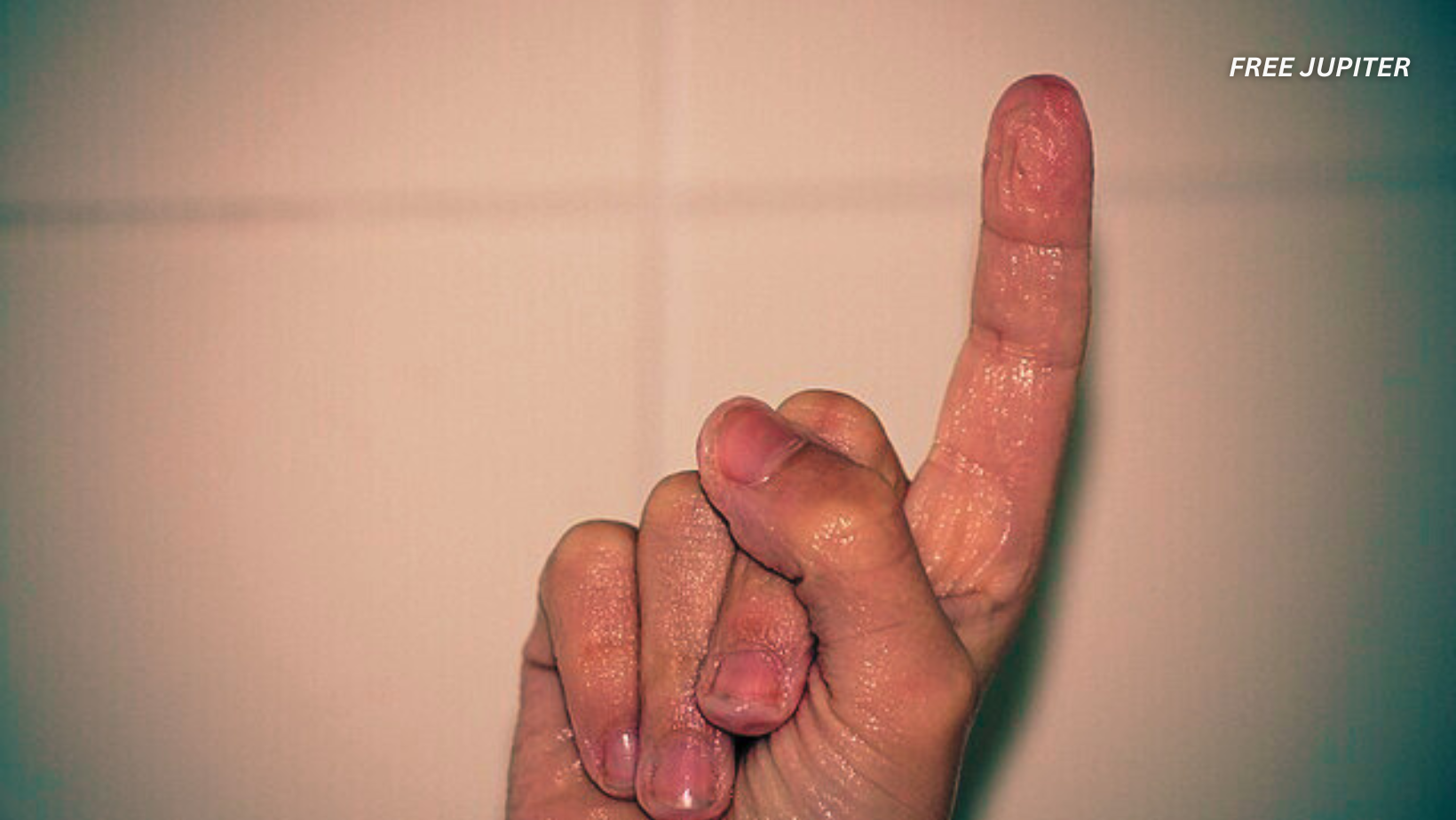Friendly Note: FreeJupiter.com shares general info for curious minds 🌟 Please fact-check all claims—and always check health matters with a professional 💙
Almost everyone has experienced it: after a long swim or a leisurely bath, your fingers and toes begin to wrinkle, resembling tiny, shriveled grapes or raisins. This curious transformation has long been a source of fascination and speculation. Why does this happen? Is it simply because the skin soaks up water and swells? Or is there a more complex biological mechanism at work?
For many years, the popular explanation was straightforward: water penetrates the skin, causing it to swell and buckle, much like how a sponge expands when wet. However, recent scientific investigations have upended this assumption, revealing that the wrinkling of digits is not a passive process but an active one controlled by the nervous system. This discovery not only clarifies the physiological process but also suggests an evolutionary advantage behind this seemingly odd phenomenon.
Debunking the Water Absorption Theory
The idea that skin wrinkles because it absorbs water and swells is intuitive but inaccurate. Human skin is designed to be a protective barrier, preventing excessive water from entering the body’s tissues. The outermost layer, the stratum corneum, is particularly resistant to water penetration. If the skin simply absorbed water, our fingers would puff up evenly and become smooth rather than developing the characteristic wrinkled texture.
Instead, the skin’s wrinkling results from a reduction in the volume beneath the surface, not an increase. This is a subtle but crucial distinction that scientists have confirmed through careful experimentation.
The Nervous System’s Role: An Active Response
The key player in this process is the autonomic nervous system, which governs involuntary functions such as heart rate, digestion, and temperature regulation. When your fingers or toes are immersed in water for an extended period-typically around five minutes or more-nerve signals trigger a physiological response that causes the blood vessels in those areas to constrict.
This vasoconstriction reduces the volume of the underlying tissue, causing the skin to pucker and form wrinkles. The effect is akin to how a grape shrinks into a raisin: it loses internal volume but retains the same surface area, which then folds and creases.
Dr. Guy German, an associate professor specializing in biomedical engineering, conducted experiments to explore this phenomenon. By having volunteers soak their fingers for 30 minutes, his team observed the formation of distinct, repeatable wrinkling patterns. These patterns were consistent when the fingers were soaked again 24 hours later, indicating that the wrinkling is not random but follows the fixed structure of blood vessels and skin.
Read more: You Might Be an Anxious Introvert If You Catch Yourself Doing These 15 Things
How Does the Process Work Biologically?
When submerged, sweat ducts in the skin open, allowing water to enter the tissue. This influx dilutes the salt concentration in the skin. Specialized nerve fibers detect this change in salt levels and send signals to the brain. In response, the autonomic nervous system constricts the blood vessels in the fingers and toes.
This narrowing of blood vessels reduces the volume beneath the skin, causing the surface to buckle and form wrinkles. The process is a finely tuned biological reaction rather than a simple physical swelling.
Notably, individuals with nerve damage in their fingers do not experience this wrinkling, providing strong evidence that the nervous system’s involvement is essential. This finding also has potential clinical applications, as the presence or absence of wrinkling could serve as a diagnostic tool for nerve function.
Consistency of Wrinkle Patterns
The wrinkling patterns that emerge are not chaotic or random. Because the blood vessels that constrict do not shift their positions significantly, the wrinkles form in roughly the same locations each time the skin is soaked. This repeatability suggests that the skin’s wrinkling is a structured response tied closely to the underlying anatomy.
Read more: A Hidden Mutation in the Human Genome Is Giving Some People an Extraordinary Edge
Evolutionary Significance: Wrinkles as Nature’s Grip Enhancers
Perhaps the most fascinating aspect of this phenomenon is its evolutionary purpose. Wrinkled fingers and toes are not merely a side effect of water exposure but an adaptation that enhances our ability to grip objects in wet conditions.
Research has demonstrated that wrinkled skin provides better traction underwater compared to smooth skin. This is similar to how tire treads improve grip on wet roads by channeling water away and increasing friction. In practical terms, the wrinkles help channel water away from the skin’s surface, reducing slipperiness and allowing for a more secure hold.
For early humans, this adaptation would have been highly beneficial. Whether gathering food from wet plants, fishing, or navigating slippery riverbanks and rocky shores, improved grip in wet environments could have increased survival chances. The wrinkling of toes might also have helped maintain balance and footing in rainy or wet terrain.
Broader Implications and Future Directions
Understanding the mechanism behind finger and toe wrinkling opens new avenues for scientific and practical exploration. For instance, this knowledge could inspire the design of gloves, footwear, or tools optimized for wet conditions, mimicking the natural wrinkling effect to enhance grip.
Additionally, the phenomenon provides a unique window into the autonomic nervous system’s functions and could be used as a simple, non-invasive test for nerve health. Since nerve damage prevents wrinkling, observing this response may help clinicians assess peripheral nerve function in patients.
Further research might explore whether similar mechanisms exist in other animals and how this trait evolved across species. It also raises questions about how other environmental factors-such as temperature, medication, or hydration-might influence this wrinkling response.
Read more: You Won’t Believe How Much the New Pope Is Getting Paid
Final Thoughts
The next time you notice your fingers and toes taking on that familiar wrinkly texture after a long soak or swim, pause for a moment to appreciate the remarkable biological choreography unfolding beneath your skin. This seemingly simple change is far from a random or trivial quirk; it is a sophisticated, finely tuned response orchestrated by your nervous system-a silent signal of your body’s incredible adaptability.
What makes this phenomenon truly fascinating is how it reveals the subtle interplay between our physiology and the environment. The wrinkling of digits is not merely an incidental byproduct of water exposure; it is an active, purposeful adjustment designed to enhance your interaction with wet surroundings. This adaptation likely offered a significant survival advantage to our ancestors, improving their ability to grasp slippery objects, forage in damp conditions, and maintain stable footing on slick surfaces. In essence, your wrinkled fingers are a living relic of evolutionary problem-solving, a biological tool honed over millennia to meet the challenges of a watery world.
Moreover, this process highlights the remarkable capabilities of the autonomic nervous system, a part of our biology that operates largely out of conscious awareness yet profoundly influences how we experience and respond to the world. The fact that your nervous system can detect subtle changes in salt concentration and trigger precise vascular adjustments underscores the intricate communication networks within your body.










